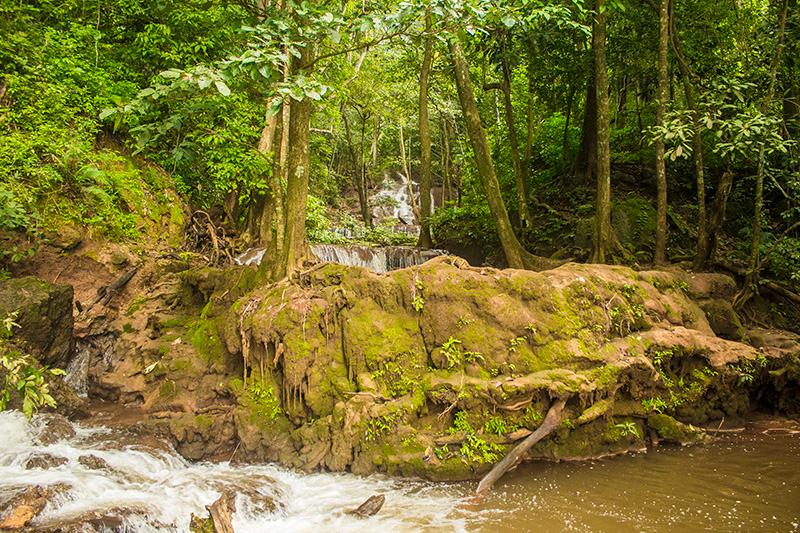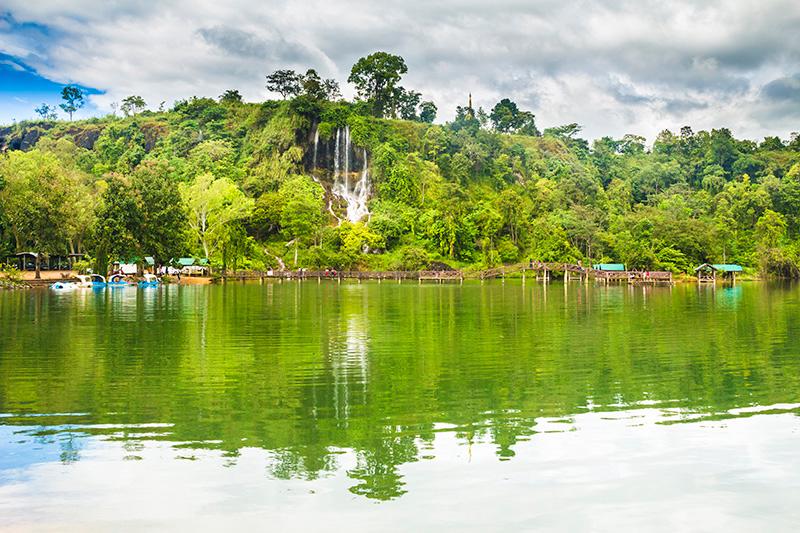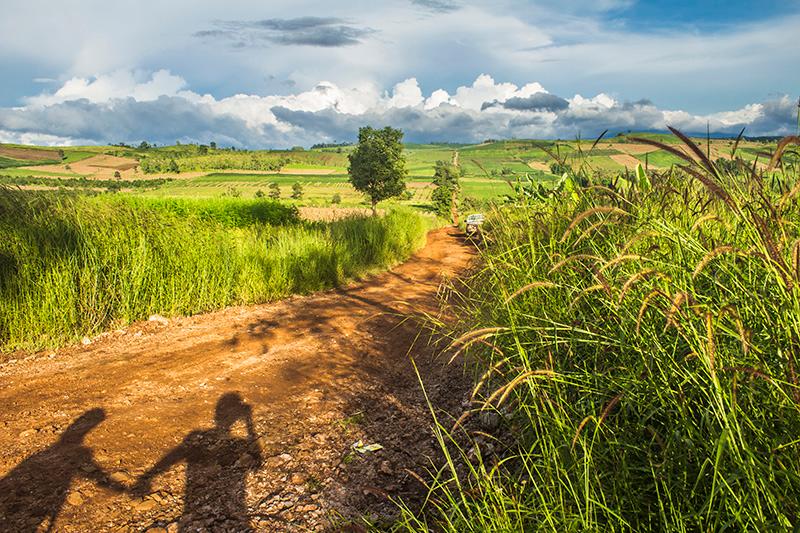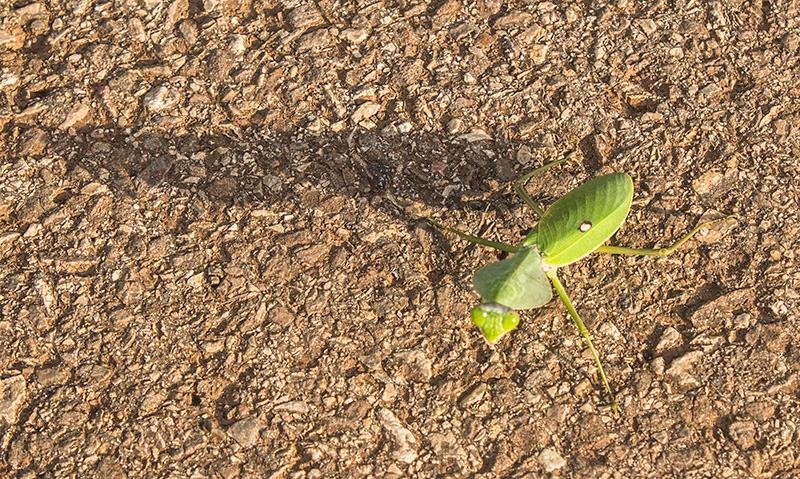Don't Go Chasing Waterfalls On Thailand's Death Highway (Mae Sot Travel Guide)

It sounds quite ominous, doesn’t it?
The "Death" Highway.
Running alongside the Thai-Burmese border, the Death Highway or Highway 1090 is a 164 km-long stretch of asphalt road in Thailand, which links the Thai-Burma border town of Mae Sot with Umphang.
Not long after leaving Mae Sot, the road begins its gradual upward ascent through the mountainous terrain, the scenery becoming increasingly spectacular as the journey progresses.
The forest becomes ever lusher and denser until the road attains its maximum altitude of 1345m about 114km from Mae Sot. Indeed, the wild terrain that this highway passes through is rich in natural attractions such as wildlife, waterfalls and pristine highland forests.

But why the ominous sounding name given to this route?
The road earns its name from the high incidence of traffic fatalities that is associated with it.
In the higher stretches, there are many dangerous hairpin bends and steep gradients and the road surface can become very slippery after rain. Add in impenetrable fog, inexperienced tourist drivers and reckless truck drivers in a hurry to bring their cargo through the mountains and you’ve got a recipe for disaster.
The death highway has an annual death toll of 50+ fatalities. In 1995, a bus accident on this very stretch of road killed 25 teachers from Bangkok and there have been hundreds more fatalities since.
The high incidence of traffic fatalities here however is really just a reflection of a broader trend in Thailand, which is now claimed by some to have the 2nd most deadly roads in the world.
With all that in mind, we were a little discouraged to embark upon a journey out along this road, even if we had only planned to go as far as the 40 km mark.
However, we hadn’t had a proper day adventure for over a week at this stage and the prospect of feeling the wind in our hair again and visiting three pristine waterfalls in a single day was too much for our travel-addicted brains to resist.
With the lure of spending the day chasing waterfalls, we gave in to temptation and headed straight to the nearest motorbike rental company in Mae Sot.*
A few minutes later we were speeding on two wheels along the Death Highway, destined for the first waterfall of the journey; Tararak waterfall.
*Renting a scooter or a motorcycle to explore the outlying areas of towns and cities is something we always do when we travel, but if you're planning on doing this, it's always advisable to research how safe the roads are in the country you're visiting beforehand. That way, you'll at least be more prepared for any crazy driving behaviour from other road users. Also see our travel safety tips guide for more advice on staying safe on the road.
Tararak Waterfall

Reached by a short detour from the highway at the 25km mark, Tararak waterfall is a beautiful cascade fronted by a small lake and surrounded by walking trails. It’s part of the Ti Lor Su waterfall group.
All the flowers seemed to be in bloom on our visit and the golden sunflowers were blooming beautifully to add a splash of foreground colour to our photos of the waterfall.
.jpg)
There’s a pleasant walking trail here with lots of fluttering butterflies and colourful wildflowers, which leads you along a boardwalk and up some steep steps to the top of the waterfall. Up here there’s a golden stupa, a Buddha image and a nice view overlooking the lake below.
.jpg)
.jpg)
After we’d had our fill of Tararak Waterfall, we hopped back on our very reliable semi-automatic motorcycle and began making for the next waterfall; Pha Charoen Waterfall.
Pha Charoen Waterfall
.jpg)
Another short detour from the highway at the 40km mark takes you to this enchanting cascade.
This waterfall is actually inside the ‘Namtok Pha Charoen National Park’, which is a mostly mountainous national park, cloaked in mixed deciduous and coniferous forest. We didn’t have time to explore the rest of the national park unfortunately, so we just focused on enjoying the waterfall.
To our amazement, there was no entrance fee collected here as we cruised past a checkpoint on our way into the national park. Several other travellers have reported the same thing as us; that this waterfall is free for everyone to enjoy.
We parked our motorcycle in the carpark and meandered along a wooded path until the waterfall came into view. It was indeed a wondrous sight to behold.
.jpg)
Not your typical plunge waterfall, the Pha Charoen waterfall consists of multiple smaller cascades with shallow pools between them. We didn’t do a count but there are said to be 97 tiers or steps in total.
The waterfall is a photographer’s dream and when the sun is shining and the lighting is perfect, it can make for a really spectacular photograph.
It’s perfectly possible to walk up along the waterfall, wading in the cool mountain water… and that’s exactly what we did. The limestone bedrock was not too slippery but you should still be quite careful if you want to try this.
A trail also runs alongside the waterfall through the jungle and you can walk upstream as far as you wish, although the trail becomes ‘wild’ quite quickly. There are no doubt many less explored pools upstream, awaiting the adventurous.
.jpg)
As we descended down the steep trail alongside the waterfall, it was getting late in the afternoon. We had just enough time to visit one more waterfall before the sunset. Jumping back on the motorcycle, we drove out of the national park and back onto the highway.
The next and final waterfall we had planned to visit that day was the Pa Wai waterfall, but to reach it we had to make a fairly length detour from the highway.
Pa Wai Waterfall
.jpg)
Pa Wai waterfall is the most remote of the three waterfalls. It’s located just a few kilometres beyond the tiny Hmong village of Ban Pa Wai, which you’ll pass through on the way there.
To reach the waterfall, you have to turn off the highway at the 41km mark and make the 14km journey along rural highway 4017 until you reach it.
This is a very scenic stretch with tree-lined roads and colourful undulating hills planted with maize, chilies and other crops. We got so excited by the beauty of the scenery that we had to stop the bike to take some photographs. It is a shame that much of the area has been deforested for agriculture though.

A little further along the road, we stopped the bike again to take a closer look at a fascinating creature that was trying to cross the road.

Some time later, we cruised through the tiny Hmong village of Ban Pa Wai and it was interesting to see the difference in the standard of living all the way out here compared with that in the major Thai towns and cities. Seeing the thatched huts and farm animals (chickens, ducks, pigs etc.) in this little village reminded of us scenes from rural Laos and Myanmar, where people are a lot poorer.
Anyhow, a few kilometres on from Ban Pa Wai, we finally reached the remote Pa Wai waterfall, parked our bike and descended down a small staircase to view the cascade.
The Pa Wai waterfall is right beside the road so you don’t have to trek out to it or anything. The name apparently derives from a local word, which refers to the slender rattan trees (Calamus Caesius) that are abundant in the area around the waterfall.
The waterfall is similar in concept to the Phra Charoen waterfall and located in the same national park; a large number of small cascades with shallow pools between them, amounting to a total fall of perhaps 40m. The bedrock here is also limestone and there is supposedly a deep sinkhole and also a limestone cave nearby, where bats fly out as dusk approaches.
We didn’t have enough daylight left to go exploring and looking for the cave or sinkhole but as we arrived, the sun was setting through the trees in the background, providing ideal lighting for a photograph.

Because of its gentle nature with smaller cascades and shallow pools, this is a lovely little ‘interactive’ waterfall, where you can bathe or splash about without fear of getting swept away in a torrent. That said… the situation may be different after heavy rain!
As the light was now rapidly fading, we had to soon say goodbye to Pa Wai waterfall. We began driving back towards the highway and as we reached the scenic stretch with the undulating hills and cornfields, the setting sun suddenly popped into view, showering us in its mesmerizing orange rays.
We stopped the bike and walked into a cornfield to admire the sunset and take a few photos. All the while, the sky had been turning a dazzling golden colour behind us, revealing a majestic spectacle.

Finished with the day’s adventures, we drove back to Mae Sot in the dark wondering if the day could have gone any more perfectly.
Practical Information
- You can rent a motorbike cheaply from the Honda Service Centre in Mae Sot. The bikes here were excellent and in great condition. We paid 100 baht ($3) for a half day.
- Fill up the tank to the max before you leave Mae Sot because a sizeable portion of the trip is off the beaten track where there are no gas stations.
Watch Video:
Recommended Guidebook: Lonely Planet Thailand
Have you ever had a day like this, where everything just fell perfectly into place? Tell us your story.
JOIN OUR LIST
SUPPORT US
FOLLOW US
ABOUT US
Our names are Eoghan and Jili and we hail from Ireland and India respectively.
We are two ardent shoestring budget adventure travellers and have been travelling throughout Asia continuously for the past few years.
Having accrued such a wealth of stories and knowledge from our extraordinary and transformative journey, our mission is now to share everything we've experienced and all of the lessons we've learned with our readers.
Do make sure to subscribe above in order to receive our free e-mail updates and exclusive travel tips & hints. If you would like to learn more about our story, philosophy and mission, please visit our about page.
Never stop travelling!
FOLLOW US ON FACEBOOK
FOLLOW US ON PINTEREST
-lw-scaled.png.png)


